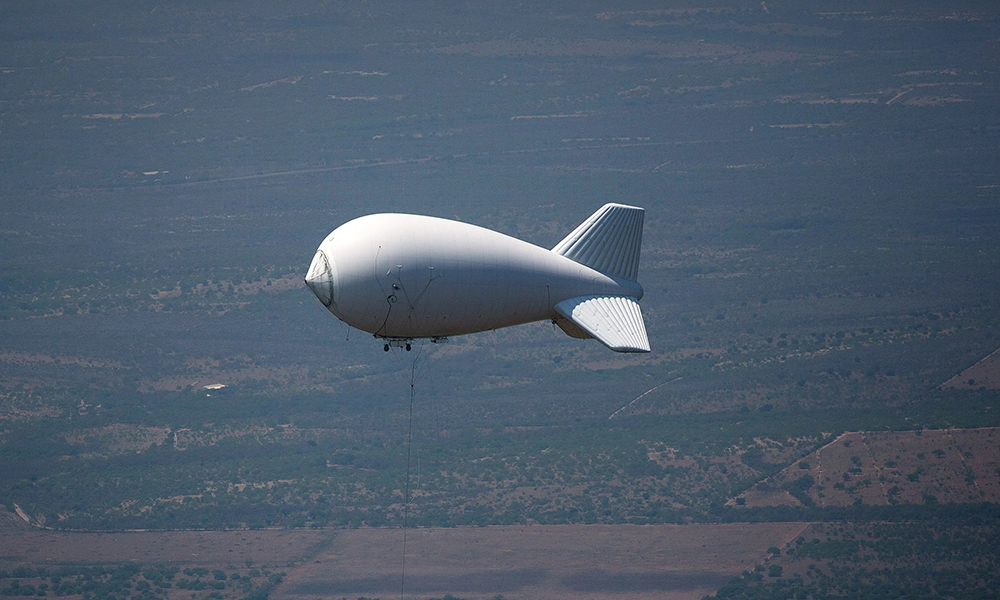美军未来王牌武器:巨型高空气球

无人机已经成为军方空中侦察的首选技术,但美国的五角大楼(Pentagon)似乎对一种传统概念寄予厚望,那就是高空气球。
与以前的军用飞艇相比,这些高空气球的科技含量更高。太阳能驱动的气球可以借助60000英尺(约18288米)至90000英尺(约27432米)高空的气流,使用算法在空中航行。
Politico的报道称,五角大楼大幅增加了高空气球的预算,希望它们能够协助跟踪和拦截俄罗斯与中国的高超音速导弹。
Politico分析预算文件发现,在2023年的财政预算中,美国国防部(Department of Defense)预留出2710万美元继续开展气球项目,而其过去两年在该项目上的支出只有380万美元。
五角大楼之所以将高空气球纳入覆盖范围已经很广的监视技术网络,是由于美国对俄罗斯和中国的高超音速导弹的担忧日益加剧。
今年3月,俄罗斯声称在乌克兰使用高超音速导弹发动攻击,这一说法得到了美国的确认,这是该项技术首次用于实战。之后,俄罗斯在对乌克兰的攻击中多次使用高超音速导弹。
2021年7月,中国成功测试可以携带核弹头的高超音速导弹。据媒体报道称,此次测试让五角大楼深感意外,因为当时五角大楼认为没有任何国家具备这种能力。
据Politico报道,高空监视气球的生产商是Raven Industries旗下的航空航天和国防公司Raven Aerostar。这些气球将作为飞机或卫星等传统监视手段的补充,但成本更低。
气球装备了电池和使用太阳能面板充电的飞行控制单元,以及用于控制飞行安全、导航和通信的有效载荷电子设备。气球通过软件程序驾驶,能够由接受过培训的飞行工程师在任务操作中心操控,可以全天候飞行。
预算文件显示,这些高空气球还能够通过拦截电子信号和通讯内容,跟踪地面移动目标。
这并非美国国防部首次使用高空气球。2019年,美国国防部在旨在搜寻贩毒执行的“秘密长期平流层架构”(Covert Long-Dwell Stratospheric Architecture)项目中,在南达科他州部署了25个监视气球。这个项目简称为“冷星”(COLD STAR)项目。
但现在,美国国防部正在将这些气球转为军用。
Politico报道称,五角大楼证实,“冷星”项目及其气球已经被转为军事用途。(财富中文网)
译者:刘进龙
审校:汪皓
无人机已经成为军方空中侦察的首选技术,但美国的五角大楼(Pentagon)似乎对一种传统概念寄予厚望,那就是高空气球。
与以前的军用飞艇相比,这些高空气球的科技含量更高。太阳能驱动的气球可以借助60000英尺(约18288米)至90000英尺(约27432米)高空的气流,使用算法在空中航行。
Politico的报道称,五角大楼大幅增加了高空气球的预算,希望它们能够协助跟踪和拦截俄罗斯与中国的高超音速导弹。
Politico分析预算文件发现,在2023年的财政预算中,美国国防部(Department of Defense)预留出2710万美元继续开展气球项目,而其过去两年在该项目上的支出只有380万美元。
五角大楼之所以将高空气球纳入覆盖范围已经很广的监视技术网络,是由于美国对俄罗斯和中国的高超音速导弹的担忧日益加剧。
今年3月,俄罗斯声称在乌克兰使用高超音速导弹发动攻击,这一说法得到了美国的确认,这是该项技术首次用于实战。之后,俄罗斯在对乌克兰的攻击中多次使用高超音速导弹。
2021年7月,中国成功测试可以携带核弹头的高超音速导弹。据媒体报道称,此次测试让五角大楼深感意外,因为当时五角大楼认为没有任何国家具备这种能力。
据Politico报道,高空监视气球的生产商是Raven Industries旗下的航空航天和国防公司Raven Aerostar。这些气球将作为飞机或卫星等传统监视手段的补充,但成本更低。
气球装备了电池和使用太阳能面板充电的飞行控制单元,以及用于控制飞行安全、导航和通信的有效载荷电子设备。气球通过软件程序驾驶,能够由接受过培训的飞行工程师在任务操作中心操控,可以全天候飞行。
预算文件显示,这些高空气球还能够通过拦截电子信号和通讯内容,跟踪地面移动目标。
这并非美国国防部首次使用高空气球。2019年,美国国防部在旨在搜寻贩毒执行的“秘密长期平流层架构”(Covert Long-Dwell Stratospheric Architecture)项目中,在南达科他州部署了25个监视气球。这个项目简称为“冷星”(COLD STAR)项目。
但现在,美国国防部正在将这些气球转为军用。
Politico报道称,五角大楼证实,“冷星”项目及其气球已经被转为军事用途。(财富中文网)
译者:刘进龙
审校:汪皓
Drones have become the military's go-to technology for aerial surveillance, but the Pentagon appears to have big hopes for an older concept: high-altitude balloons.
These balloons are far more high-tech than the military blimps of the past. The solar-powered balloons use algorithms to navigate the skies, drafting off of wind currents at between 60,000 and 90,000 feet above the ground.
According to a report in Politico, the Pentagon is giving the balloons a big bump in spending in hopes that they could aid in tracking and deterring Russian and Chinese hypersonic missiles.
The Department of Defense has set aside $27.1 million in the 2023 fiscal budget to continue work on its balloon projects, up from the $3.8 million it spent on balloons over the past two years, according to a Politico review of budget documents.
The Pentagon’s effort to incorporate the balloons into its already extensive network of surveillance technology comes amid growing concerns over Russia and China’s arsenals of hypersonic missiles.
In March, the U.S. confirmed Russia’s claim that it used a hypersonic missile in an attack in Ukraine, marking the first time the technology has been used in combat. Russia has since followed up with several more hypersonic missile deployments in different attacks against Ukraine.
In July 2021, China successfully tested its nuclear-capable hypersonic missile, reportedly surprising the Pentagon, which did not think any nation at the time had the capability.
The high-altitude surveillance balloons are produced by Raven Aerostar, an aerospace and defense company owned by Raven Industries, and will supplement work traditionally done by aircraft or satellite at a much cheaper cost, Politico reported.
The balloons are equipped with a battery and solar panel-charged flight control unit, as well as a payload electronics package to control flight safety, navigation and communication, are piloted by a software program and manned 24/7 by trained flight engineers at a missions operation center.
According to budget documents, the balloons will also be used to track moving ground targets by intercepting electronic signals and communications.
It’s not the first time the Department of Defense has used high-altitude balloons. In 2019, the DoD made headlines when it deployed 25 surveillance balloons from South Dakota as part of its Covert Long-Dwell Stratospheric Architecture (COLD STAR) project aimed at finding drug traffickers.
But now, the DoD is transitioning its use of balloons to the military.
The Pentagon confirmed that the COLD STAR program and its balloons have been transitioned to be used for military services, according to Politico.













